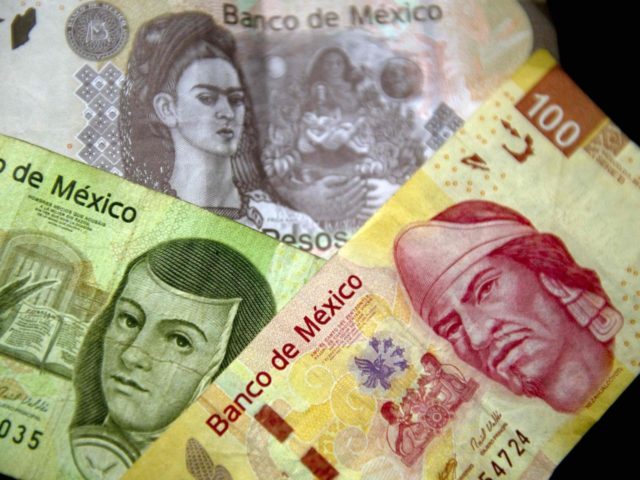Any media pundit who doubted Donald Trump could win the presidency and “build a wall” should have been watching the Mexican peso’s relentless 30 percent exchange rate decline since Trump began his campaign on June 16, 2015.
Unnoticed by most Americans, Mexico has enjoyed an “economic miracle” over the last 8 years as a tremendous number of U.S. and international companies moved to Mexico to take advantage of virtually unlimited trade access to American markets, cheap labor and a 9 percent lower corporate tax rate than the United States.
From 2009 to 2015, the Mexican economy grew by 7.5 percent compounded, compared to about 1.55 percent compounded growth in the United States. Mexican unemployment during the same period fell from 5.9 percent to 3.7 percent. That compares to U.S. unemployment declining from 9.9 percent to 4.9 percent.
Since President Obama took office, Mexico has economically outperformed the U.S. by leveraging its North American Free Trade Agreement (NAFTA) to pursue a “nearshore” competitive strategy.
Mexico is not only located adjacent to the U.S. border, versus about 6,500 miles by sea to China, but the nation’s hourly labor cost is also now 40 percent cheaper than China, according to the Financial Times. As a result, Mexico has become a prime location for American multi-national corporations to “nearshore” new factories that make “value-added” products such as automotive, aeronautical and electronic products.
While President Obama increased U.S. regulatory costs during his presidency by $100 billion a year, according to the Heritage Foundation, Mexico has conducted a deregulation campaign to reform labor and telecom laws.
It should not be surprising that as Donald Trump crisscrossed the U.S. over the last 15 months of his campaign to “Make America Great Again,” his message was boosted by announcements from major U.S. corporations like Carrier that is closing their air conditioning manufacturing plant in Indiana to move 2,100 jobs to Mexico. Ford announced on September 14 that it is moving its entire small car production to Mexico.
The Center for Automotive Research commented that despite the bulk of vehicle demand coming from U.S., of the 11 new car factories built in North America since 2011, nine were built in Mexico. BMW, General Motors, Honda, Kia, Mazda, Nissan, Toyota, and VW/Audi now build small cars in Mexico not only to benefit from lower labor costs, but also to avoid strict new U.S. emissions and safety regulations that increase manufacturing costs.
“Mexico’s talent pool is enormous,” said Sean Goforth, an analyst at Nearshore Americas. “Mexico’s universities regularly graduate more than 100,000 engineers each year. And that talent spreads out across the country, a key differentiator for Mexico. The depth of talent across Mexico City, Guadalajara, and Monterrey — as well as smaller cities like Mérida, Tijuana, and Aguascalientes — gives plenty of options for sourcing talent.”
When Trump announced his candidacy on June 16, 2015, the exchange rate for the Mexican currency to the U.S. dollar was 15.39 pesos. Few multi-national corporations that were rapidly transitioning manufacturing to Mexico saw Trump as a serious threat. But 15 months later, on September 21, the peso hit 19.9 to the dollar as Trump took a commanding lead in the polls.
On September 20, President Barack Obama told the United Nations, “Today, a nation ringed by walls would only imprison itself.” He added, “The answer cannot be a simple rejection of global integration. Instead, we must work together to make sure the benefits of such integration are broadly shared and that the disruptions — economic, political and cultural — that are caused by integration are squarely addressed.”
Trump has claimed that he will consider pulling the United States out of multinational trade deals, renegotiating them, or imposing high import tariffs on goods and services from China and Mexico. Although the Peterson Institute for International Economics argues that such a move would cause a trade-war-recession that could cost 4 million U.S. jobs, similar arguments were made about the Brexit impact on the UK, and have turned out to be false.
High-paying U.S. manufacturing jobs plummeted from about 19 million when Bill Clinton gave China “Most Favored Nation” trade access and passed NAFTA, to 11.5 million jobs in 2010 — the fewest in the United States since it entered World War II.
With Trump building a substantial lead in some presidential polls versus Democrat Hillary Clinton, the crumbling exchange rate of the peso may signal that Mexico’s economic miracles may be coming to a close.

COMMENTS
Please let us know if you're having issues with commenting.